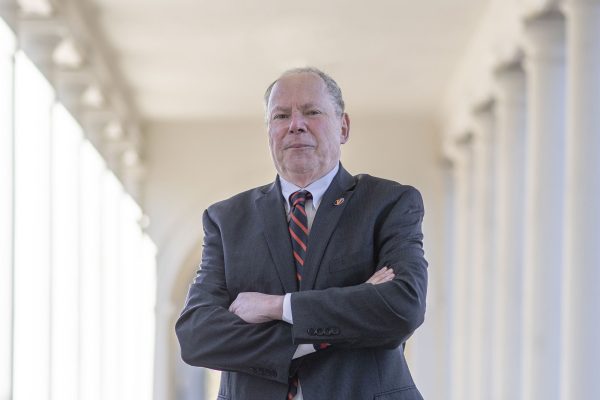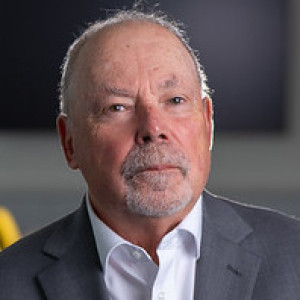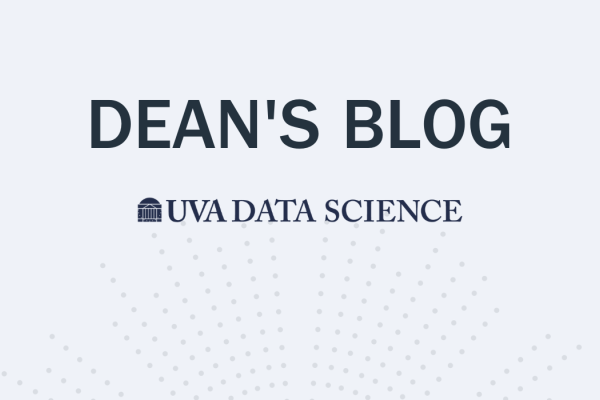Dean’s Blog: Visioning the Future
Recent AI developments, notably ChatGPT for generative language models capable of providing prose in answer to questions and DALL.E 2 in generating images from simple text, have had a profound impact on how higher education thinks about AI. It has gone from novelty to disruptor in a very short period. Part of that disruption is that university leaders, including our own, are now paying attention and concerned about what is to come.
For me, the writing was on the wall in 2016 and so well captured by the Netflix documentary on AlphaGo the following year. I took three things away from that competition in which data and software beat the world’s best human at a game. Sure that had already happened with Chess, but Go is much more complex, having more moves than there are atoms in the universe! The first thing I took away was that even the developers of AlphaGO from DeepMind were disquieted when, in winning the first two games, they realized that they had created something better than any human on the planet at a given task. Let’s reflect a moment on what it means to be human. Second, was that in the 3rd game, AlphaGo made a move that surprised the developers and all human Go players. It came out of left field and is still talked about in how it led to the third win. The final point was that DeepMind had a lot of resources, more than any typical academic department or school can spend on one task.
For those of us in the data science business, AlphaGo and other recent developments are no surprise, but they do present an opportunity. Gaining the attention of university leaders was difficult until profound change was apparent. Within two months of its launch in November 2022, ChatGPT had over 100M active users. Now that change is here, there is the opportunity to be active rather than reactive. That is, rather than respond to what has happened already, let us ascertain what is coming and get out in front of it. I would argue this would put our institution and school in a strong position. What does “get out in front of it mean?” It means predicting what will happen in say 5-10 years and building for what is to come starting today. Let us undertake one such thought experiment and discuss how to respond to it.
Take the founder of the University of Virginia (UVA), Thomas Jefferson. Much has been written about Jefferson, both by himself and others. UVA has a special collection devoted to his work. What if all these materials were digitized and available for natural language processing? It would be possible to automatically develop a timeline of Jefferson’s whereabouts and interactions–a historic social network. What if that could then be visualized at the time the University’s cornerstone was laid on October 6, 1817? James Madison and James Monroe were there, among other notable dignitaries. What if you could simulate a conversation between the men with a virtual reality backdrop of what the environment (now Pavillion VII of the Academical Village) looked like? What a way to study history! How we teach will have changed forever. All that I describe is possible already. The pieces are just not yet integrated, nor are they at a price point that makes them ubiquitous, but in ten years who knows?
The Jefferson history lesson is but one vision. Sit and think about what is becoming possible and many other scenarios arise which change how we teach, how we do research, and how we administer the University. In fact, such developments change all facets of academic life. Those institutions that are best prepared will flourish, while those that wait-and-see will struggle. I am delighted to say that UVA leadership has embraced the idea of getting out in front of these changes and we are beginning to explore what that means and how to proceed. We may be wrong in our predictions much of the time, but being right on a few occasions could make us a go-to place and offer opportunities for others.
How to get started? The way we have chosen is to convene a group of visionary thought leaders who have agreed to participate in a brainstorming session to define next steps. My personal hope is that those steps will not only lead to a set of recommendations for our university to follow, but be applicable throughout higher education. It’s hard to predict how successful the initiative will be, but I am sure it will be engaging and inspiring along the way. More to come as this unfolds.



